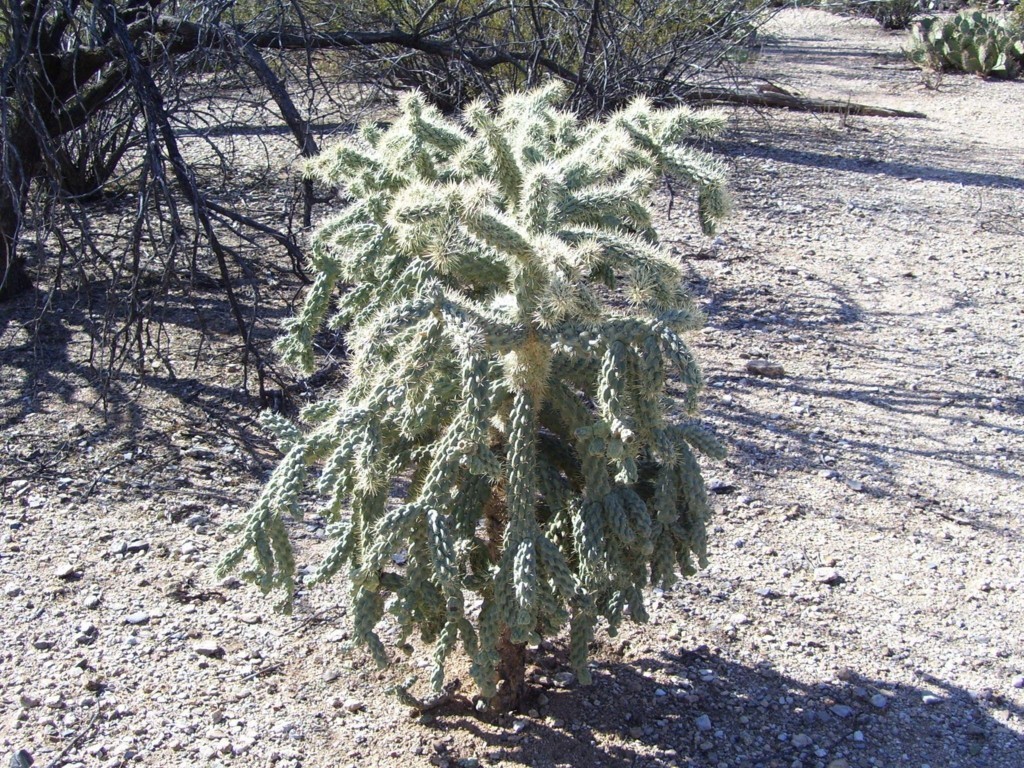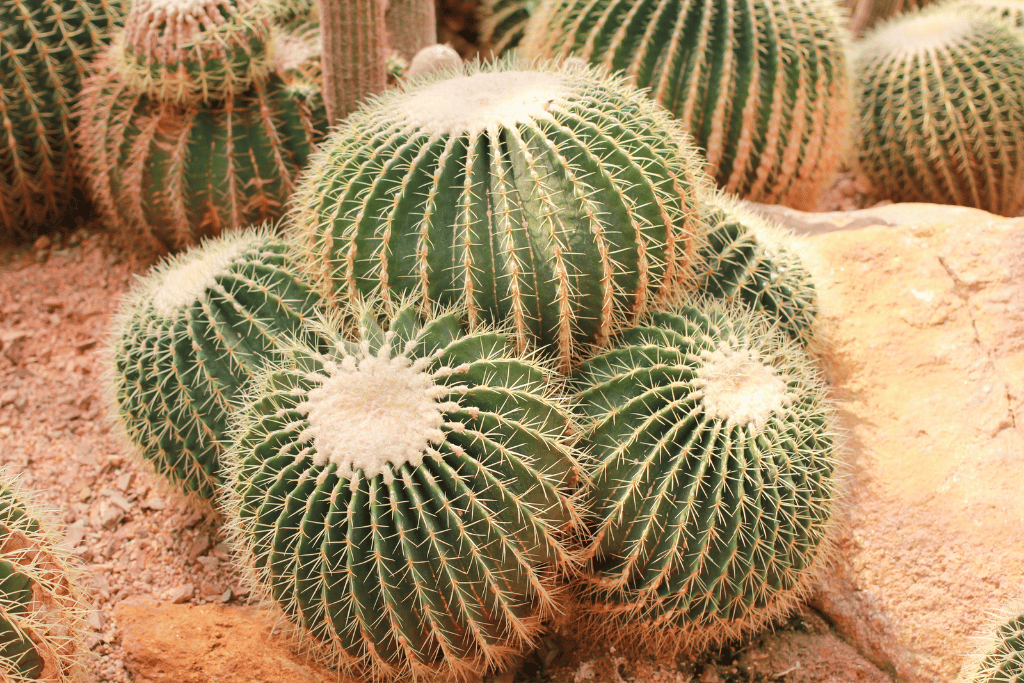I’ve always had an affinity for cacti.
There’s something remarkable about their stately manner and stoic presence. They are resilient to some of the harshest weather conditions on earth, yet stand firm while providing shelter and food for other creatures of the desert.
Cacti seem to maintain the fragile harmony that exists in the desert while making it a more hospitable place.
Years ago, a friend and I were driving across the country and had the gumption to stop through Saguaro National Park in Arizona. We thought we should visit the mighty saguaros to glean some wisdom from their ancient aura. The presence of these cacti was profound and they made a deep impression I’ll never forget.

This memory still springs to mind whenever I think about or see a cactus.
Our trip to the southwest is only a tiny snapshot into the world of the cactus.
Of course, there are thousands of different species of cacti, all with different growing habits and features, living in different geographical locations. The family Cactaceae undeniably showcases a diverse range of plants. The wide variety of the mysterious plant sometimes makes me wonder:
Is a cactus a vegetable, fruit, both or neither?
I’m sure other plant lovers have pondered this same prickly query.
Let’s take a botanical journey to find out how cacti are officially classified and get to the bottom of this intriguing question.
Is a Cactus a Vegetable?
The short answer is: Yes!
There are many types of edible cacti and the part of the plant determines if it’s a vegetable or not. The succulent green pads, yes the part with the prominent spines, of an edible cactus are considered vegetables. The pads which are called “nopales” remain green and ripe year-round and can be prepared in a number of ways.
Is a Cactus a Fruit?
The green flesh of a cactus is considered the vegetable portion and is not always edible. However, there are many varieties of cacti that produce buds that blossom and eventually bear fruit.
Cactus fruits typically ripen in the summer months from June to August, depending on the type. Some fruit-bearing cacti:
- Prickly pear cactus fruit ripens from green to red-orange with flavors that range from tart to tropical and finally sugary sweet.
- Dragon fruit is loaded with fiber and has a tropical fruity flavor, reminiscent of watermelon, pear and kiwi.
- Saguaro cactus fruit has a mildly sweet flavor, less intense than other cactus fruit.
- Peruvian apple cactus fruit is crunchy, tart and sweet.
- Organ pipe cactus fruits are luscious and sweet tasting.
Like most fruits and vegetables, cacti are considered exceptionally nutritious

Health Benefits of Cactus
Eating cacti is a strange concept for a yankee like me to think about. But if you’re doubting the viability of consuming cacti, consider all of these health benefits:
- Studies have shown eating cacti as a vegetable can help to stabilize blood sugar.
- Cactus is rich in vitamin C which will boost your immune system and overall health.
- Cactus as a fruit and vegetable pack incredible amounts of vitamins and minerals. Make cactus a regular part of your diet to ensure that you get plenty of vitamin A, vitamin C, potassium, calcium, iron, copper, manganese and more!
- Due to their high fiber content, cactus nopales and fruit can regulate and reduce cholesterol levels. That along with anti-inflammatory properties helps minimize the risk of stroke and heart disease.
- Try sipping some cactus juice the next time you’re suffering after a drinking bout. The high vitamin and mineral content of cacti may alleviate some of the symptoms of a hangover.
Edible Types of Cacti
Those who live in native areas might recognize these edible cacti:
Prickly Pear Cactus
Opuntia is a genus of cactus that includes over 100 species of prickly pears. It’s common to see the pads, or nopales, of the prickly pears in grocery stores in the southwest.
The nopales require a bit of processing before they can be eaten; make sure you remove all of the tiny spines, as biting into a spike would be an awful, unexpected surprise.
Prickly pear fruits should be skinned before eating the sweet flesh.

Dragon Fruit Cactus
Dragon fruit cacti are admired in their native region of Central America. The stems, flowers and fruit are all edible and highly nutritious.

Stems can be tough and should be blended up to prepare for consumption. Flowers are added to soups, stir-fries or made into tea. Underneath the tough outer skin of the fruit is a soft, sweet and vitamin-rich flesh.
Cholla Cactus
Flowers are the most sought-after ingredient of the cholla cactus. The unopened flower buds are harvested and the spines are removed. The potassium-rich flowers can then be fried, added to bean dishes or salads.

Barrel Cactus
Loaded with stiff, sharp spines, the barrel cactus offers many edible parts, despite its intimidating appearance. Flowers, fruits and pads of the barrel cactus can all be safely consumed once they’re despined of course.

Seeds within the fruit are edible as well, but taste best when they’re toasted and ground down. The bright red flowers can be added to different dishes, while the fruit of the barrel cactus has a tart flavor and are conveniently without spines, unlike other cactus fruit.
Saguaro Cactus
The fruits and seeds of the saguaro cactus are well recognized for their versatility and health properties. The fruit can be eaten fresh, blended into a juice or even dehydrated (which isn’t difficult in the desert) for future use. Jams, syrups and wines are also popular products concocted with saguaro fruit.
The seeds of the saguaro fruit are used to make an edible oil or ground down into a meal.

Poisonous Cacti
It’s worthwhile to learn about the edible types of cacti, their benefits and how to properly prepare them for consumption. It’s equally, if not more, valuable to know about which cactus varieties can be dangerous to our health. Beware of these types of cacti, which can induce nausea, vomiting, paralysis and psychotic effects.
- San Pedro cactus
- Peyote Cactus
- The Peruvian torch
- Cholla cactus (flowers and fruits are edible)
- Barrel cactus (most parts are edible)
The Pointed Truth
So, our initial prompt turns out to be a trick question.
It’s fascinating that a single plant can offer nourishment in the form of both a vegetable and fruit, granting healthy, fresh food to anyone brave enough to harvest it!
However you choose to view cacti, it’s important to keep in mind their significance to the environment and culture where they reside. Such a substantial source of shelter, food and medicine in a barren land must be highly valued and respected.
Why not take a drive out to the desert sometime and observe some of these peaceful providers in all their glory? I’m sure it will move you as much as it did me.
Frequently Asked Questions (FAQ)
How do I eat a cactus pad?
As a staple vegetable in Mexican cooking, nopales are traditionally prepared in a few different ways. Nopales are typically simmered in water until tender and then added to egg dishes, salads, soups and as a stand-alone side.
Can I eat a cactus raw?
Cactus fruit is usually eaten raw and it is possible to eat edible cactus pads raw. The flavor and texture of nopales are generally believed to improve after simmering, boiling, grilling, frying or sauteing.
What cactus has the worst spines?
Cholla cacti are recognized as having the most painful spines. The large, barbed spines are designed to latch on to animals that transport and drop them, providing the opportunity to grow into an entirely new plant.
What cactus is inedible?
The Bolivian cactus, San Pedro cactus and peyote should not be eaten, as they will cause severe negative effects like gastrointestinal distress, vomiting and hallucinations.



